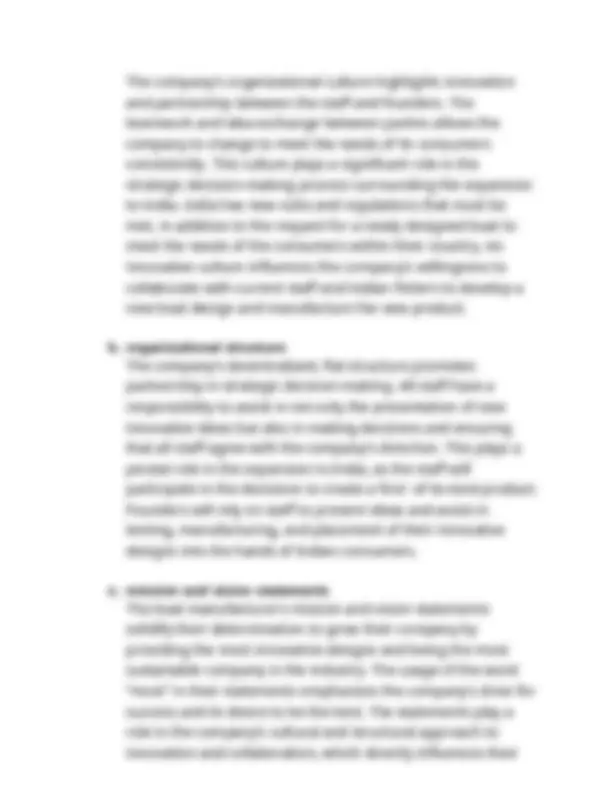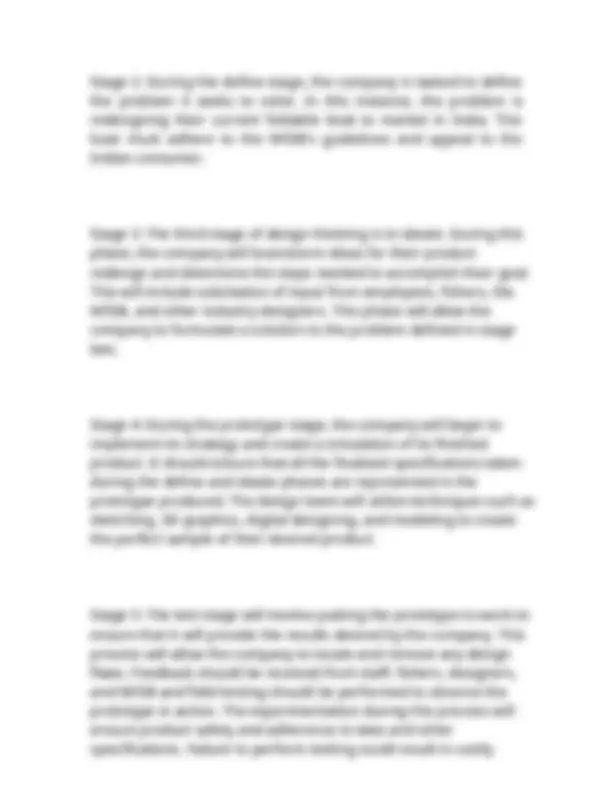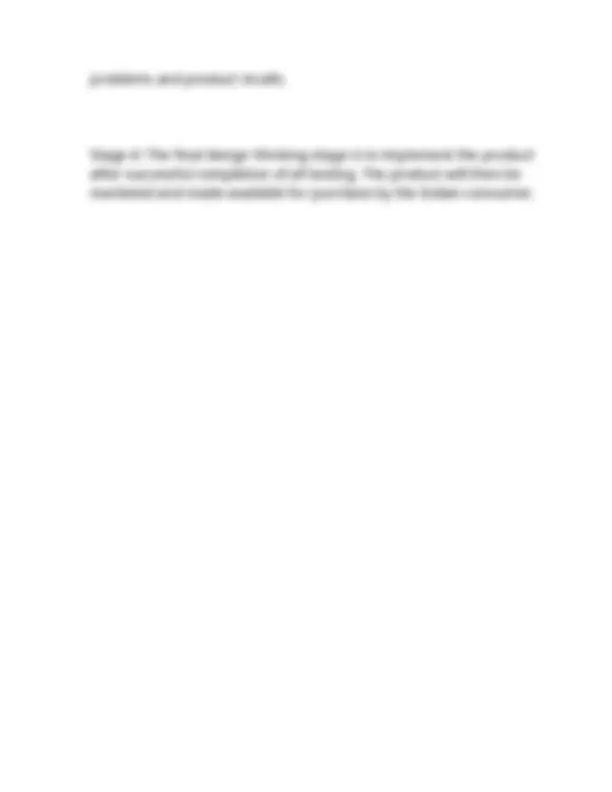








Study with the several resources on Docsity

Earn points by helping other students or get them with a premium plan


Prepare for your exams
Study with the several resources on Docsity

Earn points to download
Earn points by helping other students or get them with a premium plan
Community
Ask the community for help and clear up your study doubts
Discover the best universities in your country according to Docsity users
Free resources
Download our free guides on studying techniques, anxiety management strategies, and thesis advice from Docsity tutors
D081-QBM3 Task 1 Template well detailed study notes latest /updated
Typology: Study notes
1 / 12

This page cannot be seen from the preview
Don't miss anything!







Task 1 Course/Assessment Code: D081 Version 5/QBM A. A1. This U.S. boat manufacturer has created a clan-adhocracy culture, which is an advantage to the company because of its ability to accept and welcome change. They foster a teambuilding culture that focuses on innovation, collaboration, and commitment to its customers. Communication is a priority within this culture and employees have direct access to leadership and are encouraged to present their ideas to assist in the design processes. They in turn receive incentives for their contributions, which improves employeemorale and productivity. Partnerships are formed between staff, customers, and other innovators to fulfill their commitment to grow a company that focuses on customer- driven designs. A2. The U.S. boat manufacturer’s decentralized, flat organizational structure contributes to its continued success. This horizontal structure allows for open dialogue and mutual autonomy between management and workers. Staff feel valued and trusted, which influences employee morale, promotes effective and efficient production, and includes all employees in the company’s decision- making processes. As a result of employee-management equality
and collaboration, innovative ideas are consistently flowing. This influences customer satisfaction, product loyalty, and company longevity. A3. a. organizational culture
strategic decision-making and ability to expand to fresh territory. Expansion to India will assist in driving their growth and continuous innovations of their boat designs.
d. ethical statement The company’s ethical statement indicates its decision to make sustainable decisions that will be in favor of its customers and the environment. The adoption of sustainability is a process and certainly involves a great deal of strategic decision- making. Sustainability is not a process that takes place overnight but instead involves critical thinking, research, and clearly defined steps to ensure forward progress toward making sustainable decisions. This statement is put into action when the boating company is advised that they must change the material used in the boat design to ensure sustainability in India. Strategic thinking and collaboration will have to take place to ensure they uphold their ethical statement in not only America but any country in which they choose to expand. B. B1. Characteristic #1: The first characteristic of India is that it is an excellent emerging market opportunity, as fishing and aquaculture are a focal point and provide support to the millions of citizens of India. According to the text, the Indian fishing industry makes up approximately 1% of the nation’s gross domestic product and 6.53% of global fish exports. The age range of Indian fishers ranges from 13 to 70 and the creation of boats suitable for each age group could prove marketable. Characteristic #2: Indian laws and the National Fisheries Development Board (NFDB) prohibit the usage of outside materials to manufacture boats and request eco-friendly materials found in India be used instead. B2.
accommodate larger groups. The addition of fun colors and patterns will appeal to both male and female fishers alike. Additionally, the current boat design is appropriate for usage in “calm” waters. If the boat manufacturer could design a highly reinforced boat capable of taking on heavier waters, it would propel the company to the top of the industry and increase marketability to other countries/areas. Redesign idea #2: In addition to the NFDB’s request to utilize local plastic to manufacture the foldable boat, another redesign idea would be to expand its products to include optional biodegradable portable boat seats. These portable seats will provide comfort to fishers during their fishing experience and maximize the company's earning potential. B2a. India is open to partnerships because of the boat company’s ability to cater to fishers by designing a one-of-a-kind foldable, non- motorized boat. The boat’s redesign must appeal to fishers ranging from 13 to 70 years of age. The redesign will boost profits and allow the boat company to capture the attention of other marketing groups and assist in expansion to other countries. To maintain the ecosystem, the company has already planned to incorporate the usage of plastics found in India. The usage of these materials will assist in lowering India’s landfill waste. The addition of the portable seats will ensure the company adheres to the NFDB’s request to use eco-friendly materials, but also increase the company’s marketability and expansion capabilities. B3. Stage 1: The first stage of design thinking is emphathize. During this stage, the boat company will extensively research the Indian population and their fishing/boating needs. This can be accomplished by conducting surveys, monitoring current
fishermen's behaviors, and completing focus groups. Boats currently used by the population should be evaluated to identify upgrade opportunities.
problems and product recalls. Stage 6: The final design thinking stage is to implement the product after successful completion of all testing. The product will then be marketed and made available for purchase by the Indian consumer.
B3a: Aspect # Organizational culture directly impacts the third stage, ideate. This stage directly involves innovation, brainstorming, collaboration, and decision- making processes. The company’s culture focuses on partnership and idea exchange between staff and founders and invites employees to present creative ideas for new products. This collaboration directly influences the quality of produced products. It also influences the company’s willingness to expand to new territories and include the assistance of the Indian population in the redesign process. Aspect # The organizational structure plays a significant role during the testing stage of the design thinking process. The company’s decentralized structure endorses the founders’ and employees’ creative ideas to design new products. During the testing phase, this collaborative feedback will assist in the final decision-making process to move forward with the production of the redesigned product. Aspect # The company’s ethical standards play a pivotal role in the prototype stage of the design thinking process. The NFDB has stressed the importance of maintaining the country’s ecosystem by using locally produced plastics, protecting landfills, and using natural fishing equipment. These requests align with the company’s ethical statement which expresses its dedication to the sustainability of its customers and the environment. The manufacturer’s current boat design has a net-zero impact on the environment and uses recyclable materials. The request to incorporate local plastics will not pose an issue for the company, as its goal is sustainability.